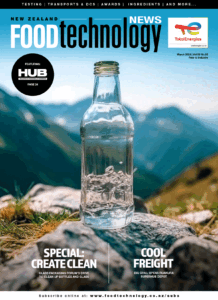
One simple illustration convinced Tetra Pak’s New Zealand Sustainability Manager Graham Burrell to take on the job back in 2020.
A life-cycle analysis of Tetra Pak products carried out in 2019 by thinkstep-anz found food and beverage cartons – what our plant-based and long-life milks, juices and other foods are sold in – were in fact more sustainable than every other type of packaging.
That’s the science that spurred Burrell, a former engineer, into taking on the newly created role which focuses on the next step in the carton’s lifecycle – recycling Tetra Pak’s packaging into building materials.
The carton lifecycle
Recycling matters, Burrell says. “But 99% of a product’s climate impact occurs before it hits the shelf. We need to begin with manufacturing and transport.”
That’s where Tetra Pak sustainability had him sold. Liquid paperboard cartons not only require less packaging to contain the same amount of product, they use significantly less plastic than alternatives.
PET bottles (even recycled ones), pouches, cans, and glass all require a higher amount of fossil fuels in manufacturing compared with paperboard.
Cartons are also lighter and easier to transport because they are delivered to the food manufacturer on a roll, not as a completed product like a bottle. Put simply, cartons have a low carbon footprint compared with all other food and beverage packaging systems, even before they are used by food manufacturers.
The next step
“The next job was to make them recyclable,” Burrell says of his step into Tetra Pak.
Keen to take on a role that made a difference and clear that the process was evidence based, he first negotiated the contract with recycling partner SaveBoard and helped the firm get up and running using his previous experience in a similar role.
He now manages the relationship between Tetra Pak New Zealand and SaveBoard, a unique low-carbon building product made from post-consumer packaging, and it’s his job to make sure that sustainability is maintained to the end of the product’s life cycle by recycling it.
“It’s a super low carbon, totally circular material.”
It is technology that has been used in the United States for at least 20 years. Burrell says the New Zealand building industry – often slow to adapt to change – is starting to embrace SaveBoard with sales increasing steadily in the just over three years since the plant was established in Hamilton.
“It’s like a sheet of MDF and can be used in ceilings, walls, around building sites, for desks, shelving, a whole host of things.”
While there are many manufacturers of food and beverage cartons, with SaveBoard using products from a number of them, Tetra Pak is the industry leader and initiated the Product Stewardship Collection Scheme, which includes multiple brands and is run by industry group The Packaging Forum.
With a stated purpose to “protect what’s good” it was an exciting opportunity to bring a recycling programme Tetra Pak had already had in place overseas, to New Zealand.
“The idea is no carton goes to landfill.”
Growing the good
The programme relies on a separate collection scheme – it’s not supplied by council kerbside recycling which no longer accepts liquid paperboard as of February 1 this year.
Milk and juice cartons are recycled separately via the Food and Beverage Carton Recycling Scheme, which aims to divert as many cartons as possible from landfill.
There are currently around 70 drop off points with capacity for more.
The long term
Burrell says there is so much to learn about sustainability, and improving wider understanding of why the entire lifecycle matters is a key focus.
Tetra Pak starts its sustainability commitment at the manufacturing stage. Implementing the recycling system – the end of the lifecycle – is now a key focus.
It was important to get the infrastructure in place for recycling first, with the February 1 changes to kerbside recycling meaning households can’t just put cartons in their council bins.
Now the programme is up and running, the focus is on letting consumers know not only how they can recycle their cartons, but that products in cartons are a sustainable choice.
As consumer awareness grows, so does behaviour. Households are increasingly willing to take the extra step and contribute to the circular economy. Making it simple, such as having drop-off points at local cafes or community centres, means getting buy in from the public.
New locations are being added regularly.
Your closest carton drop off point can be found at fbcarton.recycling.kiwi.nz.






























































































